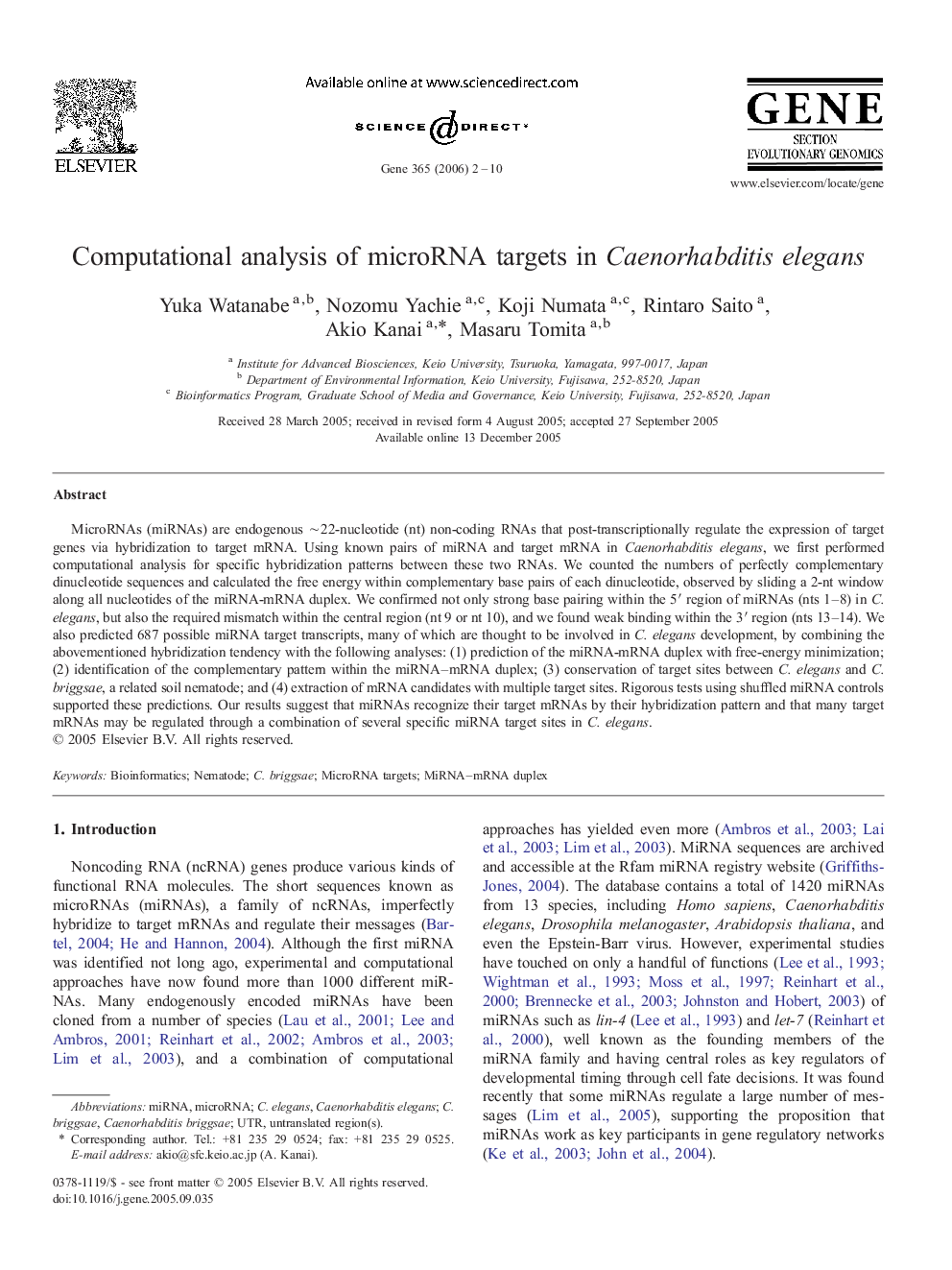| کد مقاله | کد نشریه | سال انتشار | مقاله انگلیسی | نسخه تمام متن |
|---|---|---|---|---|
| 2820437 | 1569959 | 2006 | 9 صفحه PDF | دانلود رایگان |

MicroRNAs (miRNAs) are endogenous ∼ 22-nucleotide (nt) non-coding RNAs that post-transcriptionally regulate the expression of target genes via hybridization to target mRNA. Using known pairs of miRNA and target mRNA in Caenorhabditis elegans, we first performed computational analysis for specific hybridization patterns between these two RNAs. We counted the numbers of perfectly complementary dinucleotide sequences and calculated the free energy within complementary base pairs of each dinucleotide, observed by sliding a 2-nt window along all nucleotides of the miRNA-mRNA duplex. We confirmed not only strong base pairing within the 5′ region of miRNAs (nts 1–8) in C. elegans, but also the required mismatch within the central region (nt 9 or nt 10), and we found weak binding within the 3′ region (nts 13–14). We also predicted 687 possible miRNA target transcripts, many of which are thought to be involved in C. elegans development, by combining the abovementioned hybridization tendency with the following analyses: (1) prediction of the miRNA-mRNA duplex with free-energy minimization; (2) identification of the complementary pattern within the miRNA–mRNA duplex; (3) conservation of target sites between C. elegans and C. briggsae, a related soil nematode; and (4) extraction of mRNA candidates with multiple target sites. Rigorous tests using shuffled miRNA controls supported these predictions. Our results suggest that miRNAs recognize their target mRNAs by their hybridization pattern and that many target mRNAs may be regulated through a combination of several specific miRNA target sites in C. elegans.
Journal: Gene - Volume 365, 3 January 2006, Pages 2–10